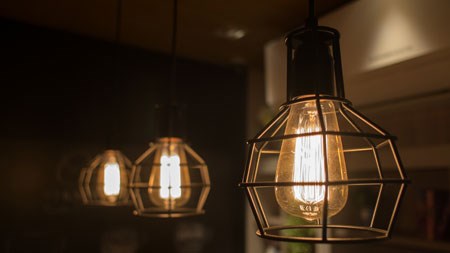Disputes over fixtures and fittings during a property transaction are common. Here's what you can do to avoid misunderstandings.
Fixtures add to the allure of a home and although a buying decision won't necessarily be based solely on the gorgeous light fittings or bathroom fixtures, they do play a role.
Moving in and discovering that the beautiful bathroom mirror that the previous owner bragged was specifically made for the room has been unceremoniously ripped of the wall leaving an ugly strip of two-sided tape and a couple of nails in the wall is going to leave a bitter taste.
Likewise, noting that the chandelier in the lounge has been replaced with a cheap light fitting or that the stove has been replaced with a cheaper model is going to cause friction, unless of course the seller has clearly stated his intention to remove the items in the sale agreement.
There's nothing worse than discovering that you didn't get what you paid for and although the issue may be considered small, it's something that undoubtedly raises hackles.
The sales agreement has to record which fixtures are staying and which items do not form part of the sale. Anything that is not recorded has to stay and a buyer can take legal action if additional items are removed.
Alan Levy from Alan Levy Attorneys, Notaries and Conveyancers says offers to purchase normally have clauses stating that the property is sold with all existing fixtures and fittings of a permanent nature. Examples of such items include stoves, geysers, hobs, built in heaters and electric fittings.
What can you do if items are removed?
Should a buyer who moves into a property before transfer discover that the seller has removed such items, the buyer can contact the conveyancing attorney to seek their assistance in dealing with the seller to obtain redress. In instances where transfer has not taken place and since payment has not been made to the seller, the buyer, with the assistance of the conveyancer, is in a strong negotiating position as concerns the seller’s breach of the terms of the offer.
However, he notes there are steps that can be taken if the buyer realises that items have been removed when the buyer only moves in after transfer into the new owner’s name.
He says those who move in on transfer won't necessarily have the same bargaining power mainly because the money has already changed hands and because of this the buyer and conveyancing attorney will be in weaker position to deal with the seller. “In these circumstances, the buyer may need to explore other avenues such as consulting with a property litigation attorney to institute legal action against the seller.”
Legal action is expensive and although there will be buyers who have to take steps to either recover the items or be compensated for the loss, in most cases, given the cost, buyers will choose to scratch it up to experience and leave things as they are.
What buyers need to do to avoid disputes over fixtures and fittings
The best advice is for buyers to be one step ahead of the seller and insist that all fixtures in the home will remain when the property is sold. Pay particular attention to the more expensive items and ensure they are recorded in the sale agreement if there is any doubt whether they will remain. If a seller indicates that he will be taking an item, buyers should question if the fixture will be replaced at the seller’s cost and if so, whether the replacement will be of a similar value.
Sellers need to be aware of a buyer's rights and ensure they only remove what is stipulated in the sales agreement. The buyer has every right to be aggrieved if certain items are missing and, as has been stated above, are fully entitled to take further action.




